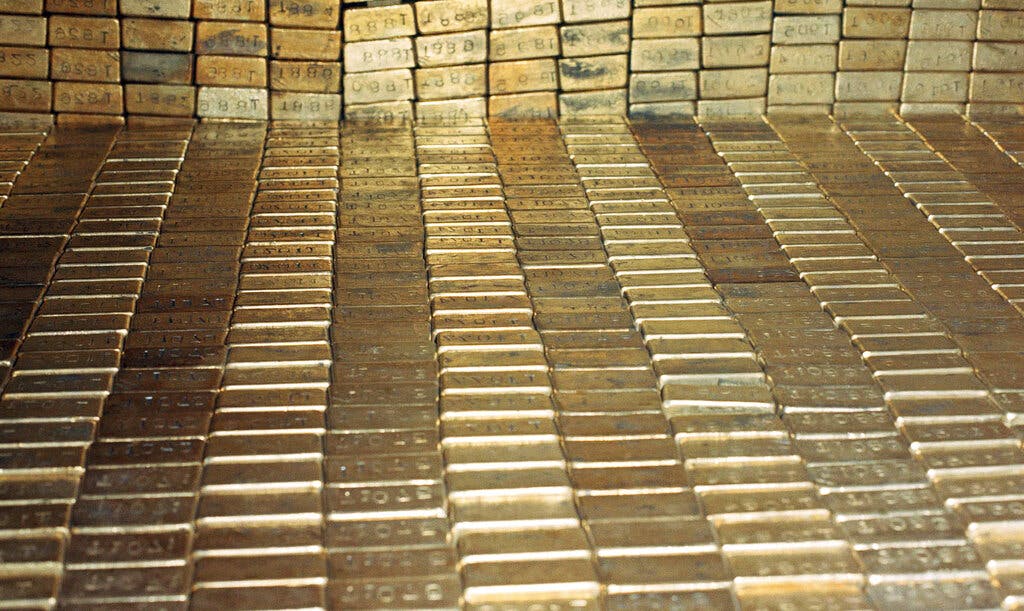Why Russia, Communist China Are Flirting With Digital Gold
An international reserve currency, says one Chinese central banker, should first be anchored in a stable benchmark.

With the outbreak of the war in Ukraine in 2022, Russia, China and their trading partners began establishing alternative monetary and financial arrangements. A leading intellectual on these matters at Moscow, Sergei Glazyev, recently proposed a “Gold Ruble 3.0,” following the gold rubles of both the Czarist and Soviet eras.
This new system would be primarily digital, but that is actually not much different than the way things were done in the late 19th century. That was underscored in 2009 by the head of Communist China’s central bank, Zhou Xiaochuan.
“An international reserve currency,” he wrote, “should first be anchored to a stable benchmark and issued according to a clear set of rules … [Its] adjustments should be disconnected from economic conditions and sovereign interests of any single country. The acceptance of credit-based national currencies, as is the case in the current system, is a rare special case in history.”
This is the opposite of present Anglo-American dogma, which has degenerated into a doctrine of continuous macroeconomic interventionism, unrestrained by any binding rules or principles and enabled by floating fiat currencies that are unstable in value by design.
Mr. Zhou’s principles are timeless. James Madison, primary author of the American Constitution, summed it up in a single sentence: “The only adequate guarantee for the uniform and stable value of a paper currency is its convertibility into specie [gold or silver] — the least fluctuating and only universal currency.”
This describes why the Constitution — in Article I, Section 10 — prohibits the states from making anything but gold and silver coin a tender in payment of debts. This was almost immediately sidestepped by President Washington himself, who established the First Bank of the United States, an early currency-issuing central bank, in 1791.
This worried Secretary of State Jefferson, who remembered the hyperinflationary banknote-printing that only a decade earlier had reduced the value of the Continental Dollar to zero. The First Bank was closed in 1811, during Madison’s presidency.
The United States adhered to the original principle, and kept the US dollar linked to gold and silver until the floating fiat era began in 1971. During this time, the United States grew to become the wealthiest, most successful, and most influential country in the world.
America’s nearly two-century experience with gold-based money ended on a high note. The 1960s are still regarded as the most prosperous decade since 1914. Today, though, it takes almost 60 times more dollars to buy an ounce of gold than it did during the Kennedy administration, and economists still can’t figure out where “inflation” comes from.
Today, Russia is not sitting on its hands. Sberbank, the country’s largest bank (50 percent state-owned), in December launched a new gold-based cryptocurrency called “DFA.” The governments of Russia and Iran are reported to be developing a new gold-based cryptocurrency for international use.
In principle, these are not much different than existing gold-based cryptocurrencies including Tether Gold, Pax Gold, and DigixGlobal. Russian banks already offer “gold savings accounts.” It is a small step to offer “gold checking accounts” that allow payments between account holders.
The gold-based currencies of the future will likely be digital or app-based, with no paper banknotes and rare use of coins. This is actually not much different from the Bank of England of 1910, which served as an international settlement clearinghouse.
It was also a “digital currency,” although the digits were kept in a ledger, with payment information relayed via undersea telegraph. Whether in the form of a paper ledger, a centralized digital ledger like all banks today, or a distributed blockchain, “gold-based digital currencies” have been around at least since the Bank of Amsterdam of the 17th century.
Communist China’s new “Digital Currency, Electronic Payment” system is expected to be linked to gold eventually, much as Mao Zedong linked the yuan to gold in 1950. China had hyperinflation in the 1940s, and bad inflation in the early 1990s.
Russia had hyperinflation in the 1990s, and several ugly currency events in the last decade. Leaders there clearly want a solution that produces a currency of “uniform and stable value,” not a politicized tool of macroeconomic manipulation. When that is what you want, there is one solution that has always been the best, and everybody knows what it is.
